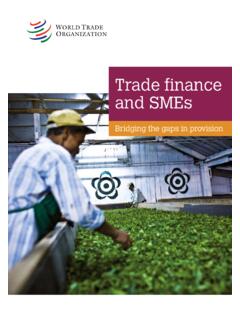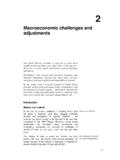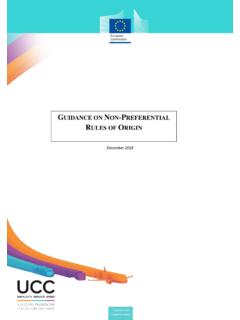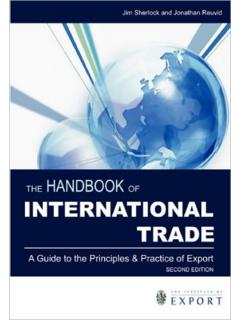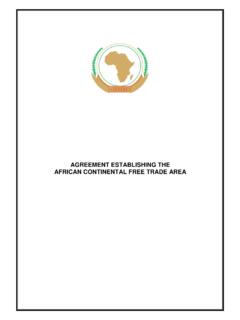Transcription of REGIONAL INTEGRATION
1 REGIONAL INTEGRATION Define the following terms and concepts related to REGIONAL INTEGRATION : Bilateral agreement, multilateral agreement, common market, single market, single economy, economic INTEGRATION , independent state, underdeveloped country, developing country, developed country, trade liberalization, globalization, multinational corporation, regionalism, trading bloc, fiscal policy, monetary policy Major challenges facing the Caribbean Region Major stages in the INTEGRATION movement Functions of the various organizations (OECS Secretariat, CARICOM Secretariat, Conference of Heads of Government)
2 Objectives of the various organizations: OECS, CARICOM, CSME Factors that promote REGIONAL INTEGRATION Factors that hinder REGIONAL INTEGRATION Benefits of REGIONAL INTEGRATION The role of individuals, businesses and government in the INTEGRATION process The role of REGIONAL agencies in the INTEGRATION processMajor challenges facing the Caribbean size, small national of and levels of production and in resource levels of indebtedness (debt burden)Major challenges facing the Caribbean level and cost of of skilled value of accessing markets of foreign of to natural disastersObjectives of the REGIONAL Development Fund CARICOM is divided with a group of smaller states belonging to the Organization of Easter Caribbean States.
3 The OECS countries have called for the establishment of the REGIONAL Development Fundto assist them to overcome any economic difficulties that their participation in the Caribbean Single Market and Economy may have on their individual economies. Areas of REGIONAL : Caribbean Research and Development : University of : Caribbean Epidemiology : REGIONAL Security : Caribbean Environmental Health : Caribbean Disaster Emergency Response : WICB OECS SPORTS DESK CONCACAFOTHER FACETS OF INTEGRATION WEST INDIES CRICKET BOARD (WICB) One of the oldest examples of REGIONAL cooperation CARIBBEAN NEWS AGENCY (CANA)
4 A REGIONAL agency that provides news on REGIONAL issues and events and buys foreign news from international sources like Reuters and Associated Press News releases are distributed to members throughout the commonwealth Caribbean Reduces cost of obtaining foreign news, promotes local Caribbean culture, keeps region informed on national and international events, enhances communication among Caribbean States, fosters REGIONAL unity CARIBBEAN BROADCASTING UNION (CBU) A non-profit private REGIONAL organisationformed in 1970 to facilitate radio and TV broadcasts among its , Caribbean Festival of Creative Arts (CARIFESTA) was conceived out of an appeal from a REGIONAL gathering of artists who were at the time participating in a Writers and Artists Convention in Georgetown, Guyana in 1970 and which coincided with Guyana s move to Republican three main considerations with regard to the staging of CARIFESTA were.
5 The Festival should be inspirational and should provide artists with the opportunity to discuss among themselves techniques and motivations it should be educational in that the people of the Caribbean would be exposed to the values emerging from the various art forms and it should relate to people and be entertaining on a scale and in a fashion that would commend itself to the Caribbean peopleCARIFESTA The REGIONAL creative festival was first held in Georgetown, Guyana in 1972, attracting creative artistes from over 30 Caribbean and Latin American countries.
6 It is a celebration of the ethnic and racial diversity which separately and collectively created cultural expressions that are wonderfully unique to the Caribbean. The cultural village life of CARIFESTA is intended to be a mixture of the States of the Caribbean Community (CARICOM); the wider Caribbean, Latin America; and a representation of Africa, Asia, Europe and North America. It is a vision of the peoples with roots deep in Asia, Europe and Africa, coming together to preform their art forms and embracing literature inspired by the Caribbean s own peculiar temperament; paintings drawn from the awe inspiring tropical ecology.
7 And the visionary inheritance of our forefathers The symbol of the first CARIFESTA was a dark hand rising grasping the sun, depicting the skills and aspirations of the tropical man with talent aims to: depict the life of the people of the Region, their heroes, morale, myth, traditions, beliefs, creativeness, and ways of expression show the similarities and differences of the people of the Caribbean generally create a climate in which art can flourish so that artists would be encouraged to return to their homeland; and awaken a REGIONAL identity in LiteratureBenefits of REGIONAL INTEGRATION Reduction in unemployment and underemployment Better response to globalization and trade liberalization Improvement in the quality of life Reduction in the inequality of wealth distribution Free movement of goods, labour and capital Increased market size Improved levels of international competitiveness Expansion of trade Increased cooperation among member statesFactors that promote REGIONAL INTEGRATION Common history Colonialism.
8 Slavery and indentureship Common cultural heritage Language, dress, cuisine, music, general lifestyle Close proximity Common economic and social issues Effects of globalization, trade liberalization and trading blocs Vulnerability to economic shocks and natural disastersGLOBALISATION Characterisedby: trade links being established around the globe (comparative advantage-purchase from cheapest source) Job creation by inflow of direct foreign investment Technological development in production of goods and services demands a skilled labourforce C beanlagging behind Migration of skilled labour brain drain from caribbeanto developed countries AS A RESULT OF GLOBALIZATION, SMALL, DEVELOPING COUNTRIES MUST UNITE IN ORDER TO SURVIVE Globalization.
9 The greater movement of people, goods, capital and ideas due to increased economic INTEGRATION . This in turn is propelled by increased trade and investment. It is like moving towards living in a borderless world. There has always been a sharing of goods, services, knowledge and cultures between people and countries, but in recent years improved technologies and a reduction of barriers means the speed of exchange is much faster. Globalisation provides opportunities and challenges. Bigger markets can mean bigger profits which leads to greater wealth for investing in development and reducing poverty in many countries.
10 Weak domestic policies, institutions and infrastructure and trade barriers can restrict a country's ability to take advantages of the changes. Each country makes decisions and policies that position them to maximise the benefits and minimise the challenges presented by HINDERING REGIONAL of the of a common strategy for in stages of growth and for location of of common distribution of of MNCs / of diversification in that hinder REGIONAL INTEGRATION Different emphases on strategies for growth: one depends on petroleum, some on tourism, others on agriculture (common policies difficult to achieve) Territorial interests often supercede REGIONAL ones eg competition for location of the smelter plant TNCs still bargain with individual governments for tax-free holidays, duty free import of raw materials, repatriation of profits etc in contravention of CARICOM objectives Since member states produce similar products (sugarcane, bananas, cocoa, coffee, ground provisions)


